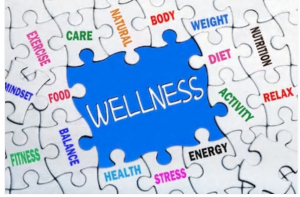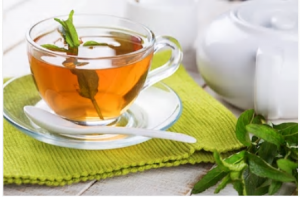Non-celiac gluten intolerance and celiac disease are becoming more common. Celiac disease is a chronic autoimmune disorder caused by a genetic intolerance to gluten. Non-celiac gluten intolerance is diagnosed in people who do not have celiac disease, but have intestinal or extra-intestinal symptoms related to ingestion of gluten-containing grains.
Both conditions are treated by avoiding gluten containing foods. Finding ‘gluten free’ nutrition is becoming easier to do, but eliminating gluten from one’s diet can be a complex and time-consuming process.
Gluten is the protein component of wheat (e.g., including spelt, kamut, semolina, and triticale), barley (e.g., including malt), and rye. When a person with celiac disease or non-celiac intolerance ingests gluten, specifically the antigenic gluten constituent called gliadin, it can cause intestinal inflammation, diarrhea, abdominal pain, bloating, weight loss, fatigue, and iron deficiency anemia. Food malabsorption and nutritional deficiencies result.
Over time, these conditions can cause liver disease, defective gallbladder emptying, and osteoporosis. Celiac disease may be a reversible cause of osteoporosis. Adherence to a gluten-free diet is one way to help suffers minimize overall symptoms and to maintain maximal bone mineral density.
For perspective, oats are considered a type of gluten grain, but do not have the antigen that other gluten grains above do. Thus, oats do not induce an immune reaction in the small intestine of people with celiac disease. However, many commercial oat products are contaminated with wheat, barley, or rye and it’s important to carefully read their labels. Look for products that are certified to contain less than 20 ppm of gluten (FDA’s ‘gluten free’ definition).
Consumption of as little as 10 mg-50 mg gluten daily can lead to a clinical relapse in people with these conditions. Celiac disease may increase the risk of developing some types of cancer (e.g., T cell lymphoma and intestinal adenocarcinoma) if gluten restrictions are not maintained or gluten intake is only partly restricted.
It is important to find out where gluten resides in foods. This means not only reading food labels on products you purchase for home but also on foods you consume from fast food establishments and restaurant dining. Soups, sausages, and ice cream may contain hidden amounts of gluten as fillers. Talk with your grocer and restaurant owners before you consume questionable food items.
Watch out for the gluten content in herbs, other dietary supplements, and medications.
Gluten-Free Foods
Consuming foods certified to be ‘gluten free’ will help keep the daily gluten total to under 50 mg and not cause symptoms for most people with celiac disease. Gluten-free grains include rice, millet, corn, quinoa, sorghum, and buckwheat. For more information, visit http://glutenfreecooking.about.com/od/gettingstarted/a/hiddengluten.htm
or http://www.glutenfreeliving.com/nutrition/ingredients.
Gluten-Free Herbs and Other Dietary Supplements
It would be impossible to find information about the gluten content in over 60,000 products on the worldwide market. One can contact dietary supplement manufacturers directly for more information on gluten content before taking any of these products, including vitamins.
Gluten-Free Medications
Over-the-counter and prescription medications may contain gluten in the list of inactive ingredients. For example, sweeteners used in medications may be hidden sources of gluten. Some manufacturers cannot guarantee their medications are gluten-free because the suppliers of raw materials can not do so, making it even more difficult for consumers to figure out what is safe to take and what is not.
A great resource for determining the overall ingredient content in medications, including whether or not gluten is present, can be found online at www.glutenfreedrugs.com .
Another online medication reference comes from the National Institutes of Health at www.dailymed.nlm.nih.gov. Go to the site, type in the generic name of the medication you want to review, then scroll down to the name of the manufacturer of that particular product, then click on ‘description.’ Scroll down to the inactive ingredients and look for gluten.
A third way to find more information about your medication’s gluten content is to call the medication manufacturer directly. Be sure to have the medication’s lot number available when you call.
Finally, click on https://www.ncbi.nlm.nih.gov/pubmed/?term=Gluten+content+of+the+top+200+medications+of+2009%3A+a+follow+up+to+the+influence+of+gluten+on+a+patient%E2%80%99s+medication+choices for “Gluten content of the top 200 medications: follow up to the influence of gluten on a patient’s medication choices” by AR King in Hosp Pharm 2013:48:736-43.
By Cathy Rosenbaum PharmD MBA RPh CHC


 .
. throughout the country. For more information visit
throughout the country. For more information visit 

 Lavender is one of many beautiful and fragrant herbs that attracts butterflies and bumble bees, and will repel moths, mosquitos, and flies from the garden. Lavender flowers (buds) can be used as a tea for their relaxing and calming effect (Basch).
Lavender is one of many beautiful and fragrant herbs that attracts butterflies and bumble bees, and will repel moths, mosquitos, and flies from the garden. Lavender flowers (buds) can be used as a tea for their relaxing and calming effect (Basch).